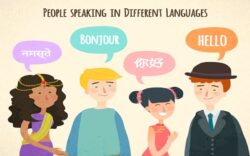Social media refers to online platforms and tools that enable users to create, share, and exchange content, ideas, and information among individuals, groups, and organizations, allowing them to connect with each other and stay informed about events, news, and trends as they happen in a real-time. These platforms can range from general-purpose sites like Facebook and Twitter to more specialised platforms like Instagram and Pinterest. Social media empowers individuals to produce and publish their own content, whether it’s text, images, videos, or audio. This democratises content creation, allowing anyone with an internet connection to share and distribute their creativity with their friends, family, followers, or the wider public, fostering communication and connection.
Social media is not just a communication tool; it’s a dynamic and influential platform for businesses to connect with their audience, build brand identity, and drive marketing success. Its interactivity, wide reach, and diverse content formats make it an essential part of modern marketing strategies. Kaplan (2001) further suggests the transition of social media to a significant marketing communications medium is due to a combination of; technological drivers such as bandwidth; economic drivers such as user access to more tools to develop User Generated Content (UGC); and social drivers such as the generation of IT savvy youth recently become consumers with purchasing power. (Kaplan, 2010)[1]. Social media has recently become a powerful tool for businesses and marketers due to its broad reach and open platform for easy communication between people across different layers. It is nowadays a cost-effective marketing platform with more credibility in contrast to traditional advertising media such as television or radio.
Social media platforms have billions of users worldwide. They split into categories such as: “lurkers” (those who are reticent to contribute to sites); “tourists” (those who post comments but demonstrate no commitment to a network); “minglers” (those who post with no regularity or frequency); and “evangelists/insiders” (those who are enthusiastic, expert and regular in their contributions) (Harridge-March & Quinton 2009, p.176)[2]. They have become integral to modern communication, marketing, and entertainment, driving traffic and increasing visibility while offering businesses the opportunity to reach specific demographics and locations by consistently sharing content that reflects their brand identity and values, enabling brands to create personalized interactions with their audience, fostering deeper connections and stronger relationships[3].
By creating and nurturing online communities, brands can engage with their audience on a more personal level, respond to queries and gather feedbacks, build relationships, measure the effectiveness of their campaigns to understand their audience behaviour and interest. Brands can also host live events, webinars, or augmented reality (AR) campaigns to promote their service or products.
Social Media an Experience Based Marketing Platform
Social media is a viral marketing campaign. Viral marketing, also known as word-of-mouth (WOM) or “buzz marketing”, is the tactic of creating a process where interested people can market to each other (Subramahi & Rajagopalan, 2003, p.1)[4] based on an experience they have lived. Experience, though sometimes relative, shows more credibility than other methods of marketing. Positive and memorable experiences can lead to higher customer satisfaction and loyalty; This approach focuses on creating memorable and engaging experiences for consumers, often through interactive and immersive activities. Some marketers incorporate this approach within “relationship marketing”; naming it “experience sharing”, creating an environment to share valuable information (Ramaswamy, 2008, p.3)[5]. is becoming its point of focus rather than transactional marketing, the aim is to build longer term relationships with customers, generating trust between buyer and seller so that loyalty develops (Harridge-March & Quinton 2009, p.174)[6].
There are, however, considerable expectations for experience based social marketing reviews. Experience either positive or negative can result in extremely effective marketing way to expand brand search and improve sales. For example, Fisher (2009) concluded that of the 70 percent of consumers who had visited a social media site to get information; 49 percent of these customers made a purchase decision with this information they found and 60 percent of the respondents in the study said they are likely to pass on information they find online. A key issue facing marketers is the source-credibility of online actors. Readers of user-made commentary typically evaluate the opinions of complete strangers, and often readers are aware of this. A proxy for individual credibility should be identified in marketing campaigns (Brown, Broderick & Lee 2007, p.7)[7].
Many marketers; however, stay cautions of social media in marketing campaigns, experience has taught them to be reticent about consumer-generated media due to their inability to control the message. Similarly, creating fake blog entries is another example of how the misuse of social media can irritate consumers and harm brands. While many social marketers fixate on volume metrics (website traffic, hit rates, click-throughs, time spent on-line, postings etc), successful social media marketing often depends more on qualitative metrics for desirable signs of the tone, quality and customer benefit of the interaction may include: unique visitors, interaction rates, relevant actions taken, conversation size, conversation density, author credibility.
Conclusion
Social media has become a pivotal platform for marketing, offering businesses unparalleled opportunities to create and nurture communities around their products or services, fostering customer loyalty and encouraging user-generated content, connect with their audience, build brand awareness, and drive sales. Leveraging social media as a marketing platform involves using various social networks to promote products, services, or content, engage with customers, and analyses the effectiveness of campaigns.
In essence, social media has revolutionised the way we communicate and consume information. It has become an integral part of our lives, influencing our social interactions, news consumption, and even our purchasing decisions.
[1] Rohan Miller & Natalie Lammas, social media and its implications for viral marketing, The University of Sydney, January 2010,
[2] Harridge March, Sally and Quinton, Sarah, (2009), “Virtual snakes and ladders: social networks and the relationship marketing loyalty ladder,” The marketing review, vol. 9, no. 2, 171-181.
[3] themediaant.com
[4] Subramani, Mani R. and Rajagopalan, Balaji, (2003), “Knowledge-sharing and influence in online social networks via viral Marketing,” Communications of the ACM, Volume 46, Number 12, 300-307.
[5] Ramaswamy, Venkat, (2008), “Co-creating value through customers’ experiences: the Nike Case,” Strategy & Leadership, 36, 5, 9-14.
[6] Harridge March, Sally and Quinton, Sarah, (2009), “Virtual snakes and ladders: social networks and the relationship marketing loyalty ladder,” The marketing review, vol. 9, no. 2, 171-181.
[7] Brown, Jo, Broderick, Amanda J. and Lee, Nick, (2007), “Word of mouth Communication within Online communities: Conceptualizing the online Social network”, Journal of interactive marketing volume 21, number 3, summer, 1-20,














